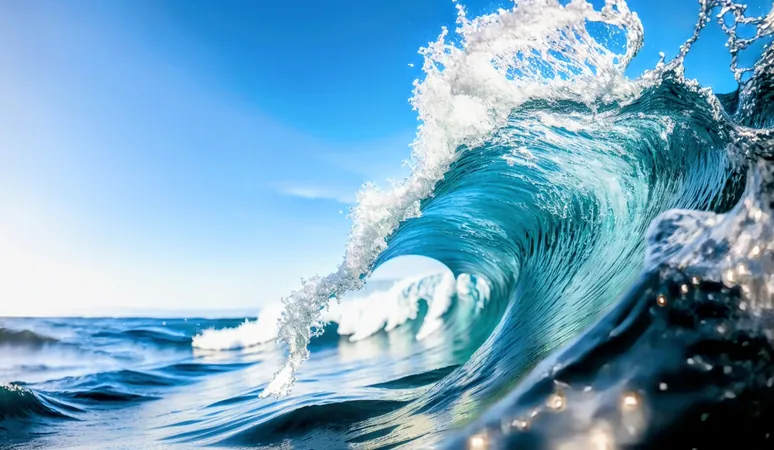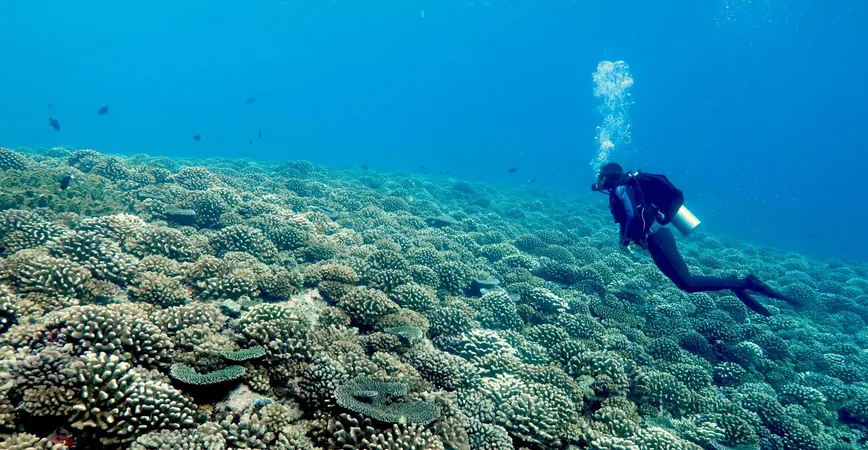
The Unseen Impact of Sea Surface Microlayers on Climate Dynamics
2024-09-29
The Sea Surface Microlayer's Critical Role
The sea surface microlayer is crucial for several environmental processes, including nutrient exchange, pollutant migration, and the transport of organic matter between lakes, rivers, and the oceans. Researchers from the University of Delaware (UD) and the University of Georgia (UGA) have come together to investigate how this unique layer contributes to climate regulation and carbon cycles. Despite facing challenges, including inclement weather and disruptions from the COVID-19 pandemic, the dedicated research team successfully undertook a critical expedition aboard UD’s Research Vessel Hugh R. Sharp, venturing into the North Atlantic Ocean to study the complexities of this microlayer.
Unveiling the Dynamics of Air-Sea Interaction
According to Andrew Wozniak, an associate professor at UD, the microlayer is more than just a surface; it hosts a remarkable accumulation of organic materials that change the physical dynamics of air-sea interactions. "The material exchange at this interface can profoundly reshape our understanding of gas exchange and atmospheric emissions," Wozniak explains.
Surfactants and Their Environmental Impact
A significant focus of the team’s research centers around surfactants, compounds that lower the surface tension of seawater. Amanda Frossard, an associate professor from UGA, stressed the importance of understanding how these surfactants interact within the oceanic environment and how they affect concentrations within the microlayer. This research is essential for grasping the implications for air-sea gas exchange and broader atmospheric chemistry. Moreover, the existence of surfactants might challenge the traditional view that wind speed is the primary driver of gas exchange, suggesting that they could play a bigger role than previously acknowledged and could help rectify inconsistencies in climate models.
Innovative Sampling Techniques Reveal New Insights
To gather sufficient samples of this elusive microlayer, the researchers adapted a Rosette sampler—a tool typically utilized for deep-water sampling. This method involved dipping the apparatus into the ocean and scraping off the surfactant-coated glass back onboard. "This innovative technique highlights the collaboration between the ship's crew and scientists to overcome the challenges posed by this extraordinary environment," Wozniak noted.
Students Engaging in Groundbreaking Climate Research
The research team also involved students, including doctoral candidates Felix Agblemanyo and Tia Ouyang, along with undergraduates Audrey Tong and Ava Grove. They all contributed to the project, gaining invaluable hands-on experience in climate science and oceanography.
A Glimmer of Hope for Future Research
With these foundational insights, the scientists aim to refine climate models and enhance our understanding of air-sea interactions. By deepening our knowledge of how surfactants influence climate processes, this research could lead to more accurate predictions regarding carbon cycles and broader climate regulation. As we continue to unveil the mysteries of our oceans, the collective efforts of these researchers stand testament to how perseverance and collaboration can address intricate environmental challenges and advance our fight against climate change. The sea surface microlayer may just be a small slice of ocean, but its global impacts could be monumental.


 Brasil (PT)
Brasil (PT)
 Canada (EN)
Canada (EN)
 Chile (ES)
Chile (ES)
 España (ES)
España (ES)
 France (FR)
France (FR)
 Hong Kong (EN)
Hong Kong (EN)
 Italia (IT)
Italia (IT)
 日本 (JA)
日本 (JA)
 Magyarország (HU)
Magyarország (HU)
 Norge (NO)
Norge (NO)
 Polska (PL)
Polska (PL)
 Schweiz (DE)
Schweiz (DE)
 Singapore (EN)
Singapore (EN)
 Sverige (SV)
Sverige (SV)
 Suomi (FI)
Suomi (FI)
 Türkiye (TR)
Türkiye (TR)